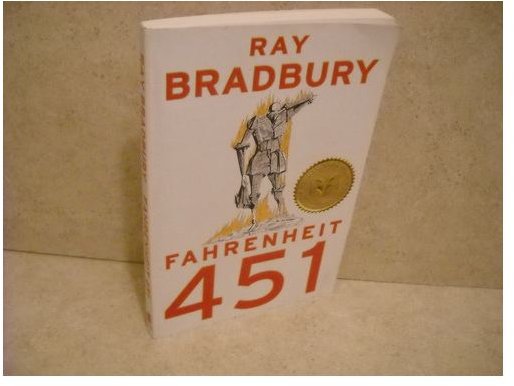Project Based Lesson Based on the Predictions in Fahrenheit 451
As a student teacher, I took a seminar in which other student teachers at my university could meet and share what we learned out in the field. During this time, I was given a list of generic project ideas that could be adapted for any novel. It was a typical choice project set: create a poster, a playlist, a short video, and so on.
When I used this list during my first year of teaching, I was surprised by how much I disliked it. Projects are supposed to be fun, right? While I enjoyed pinning up the dozens of artful reproductions of the stories we were reading, I thought to myself that students didn’t actually have to read the book to create a scene or generate a soundtrack. The more I watched my students present these types of projects, the more I felt as if there was not much authentic learning taking place.
Then, in my second year of teaching, I had the opportunity to teach at a charter school that had fully implemented the project-based learning model. During my time there, I learned the difference between students creating a project and students learning through the completion of the project. (For more, see tagosleadershipacademy.org, where projects are entirely student-driven.) If I wanted my students to demonstrate authentic learning, I had to set more of a purpose than, “Show me you know what you read.” That is what I have done with my project for the novel Fahrenheit 451 by Ray Bradbury.
**
Lesson Objectives
By the end of the project, students will be able to:
- Read and analyze important passages from Fahrenheit 451
- Present research and opinions with clarity
- Accurately cite information in MLA style
- Make appropriate text-to text connections
Materials Required
Copies of _Fahrenheit 451
_Any other materials that are needed based on the choice of the student
Lesson Procedures

Project-based learning is purpose-driven. Thus, I ask my students to answer this question with their projects: “To what extent did Ray Bradbury’s vision of the future become a reality?”
Ideally, if your students have some experience with project-based learning or are fairly independent, then the sky becomes the limit for them. However, most students will need more guidance than being told to complete a project that answers one question. So, here are some guidelines to get your students rolling.
- Start by giving students a few areas they can focus on. I usually choose technology, censorship, and our increasingly calloused society. Help them brainstorm some of the more obvious parallels (like flat-screen TVs, iPod ear buds, etc.).
- If you need to, give them a set of choices for which way they will present their findings. Most students opt for a poster or a Power Point, but urge them to think outside the box—they could put together a pamphlet, create a storyboard, or write a series of articles for their own self-published newspaper.
- I require my students to have at least three outside sources to detail the answer to the driving question: one print source, one video source, and one internet source. (A good project will go beyond the minimum requirements.)
- To ensure students truly connect their findings with the novel itself, you may also wish to set a number of passages required to analyze. More advanced students should be able to figure this out on their own, but some students may need a little guidance. I practice quotation analysis with my students first before I have them choose their own passages to connect to their research.
- Students should present their findings to the class. During their presentations, each student should clearly answer the driving question and use evidence to support his or her claims. For example, one of my students investigated the evolution of technology since Bradbury wrote Fahrenheit 451. He put together a slideshow that covered how ear buds came into being, delved into high-speed cars, and discussed the latest 3D televisions, all within the context of the book. Another girl presented a series of articles about strange ways the government tries to control people, quoting the book along the way.
Assessment
There are multiple ways to assess this project, depending on what you emphasize with your students. Ultimately, your assessment should be of how well students answer the question, “To what extent did Bradbury’s vision of the future become reality?” If you set minimum requirements for the project, you should evaluate how well students went above and beyond these requirements. You can also emphasize any skill within the project—writing, speech, or research skills.
References
- Image of book via Amazon
This post is part of the series: Project Based Learning: High School English
These lesson ideas are a great start to adding project based learning into your curriculum.
- Salem Witch Trials Webquest: Project Based Lesson to Introduce “The Crucible”
- Music in “The Pearl” by John Steinbeck: Project-Based Learning Assessment
- American Poetry Anthology: A Project Based Learning Activity
- The Roaring ‘20s: A Project-Based Learning Activity to Introduce The Great Gatsby
- Seeing into the Future: A Project-Based Learning Analysis of Fahrenheit 451
- Review of the Writing Process: A Lesson Plan for High School Students
